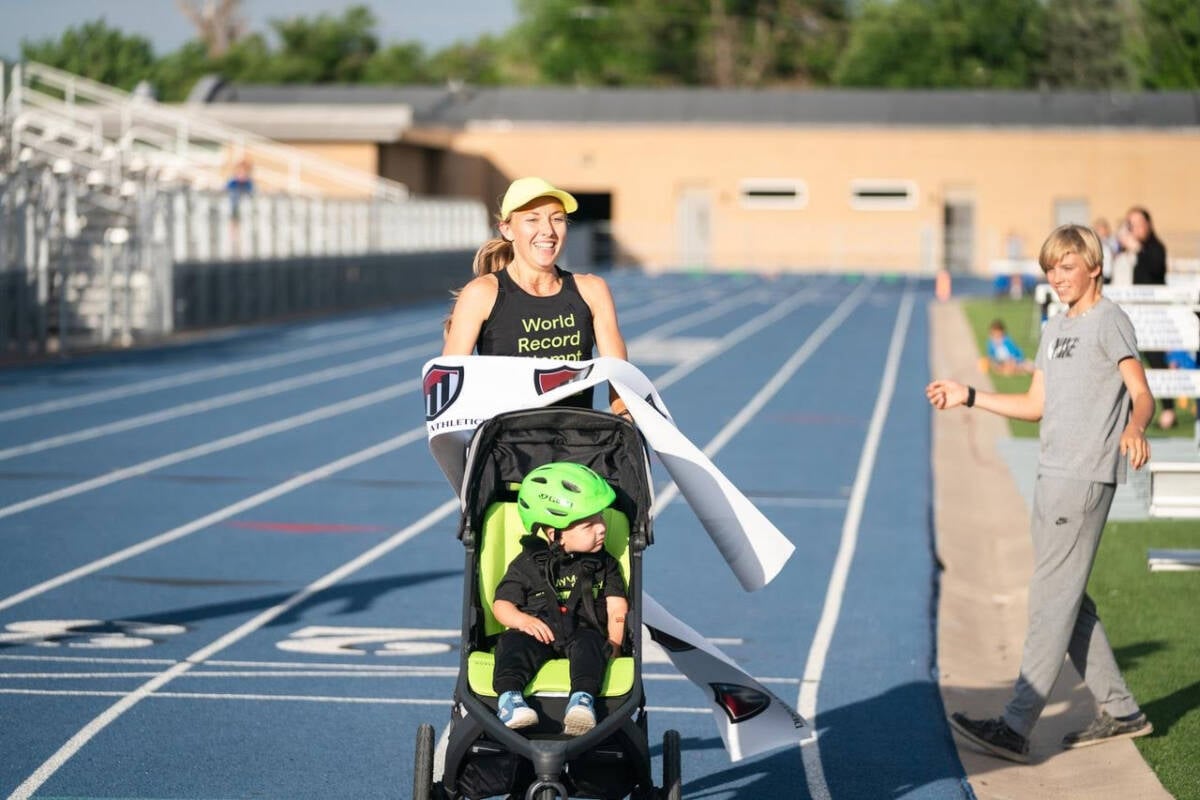Expert Tips for Teaching Running to Kids Under 8
Teaching running to kids under 8 can be challenging—but only if you let it be. Kids are born to love running. I have this crystal-clear memory of being at the park down by the Tennessee River near our house with my daughter.

Little, feisty, red-headed Eleanor was running through the field of dandelions to me just after her first birthday. She laughed and giggled the entire time. It was amazing to see her empowerment and pride bloom in how she learned how to move her body. Flash forward to today, now those feelings of strength and freedom are channelled into soccer and gymnastics…
Unfortunately, though running is often used as a punishment by her soccer coach. If the girls aren’t paying attention, they run laps for the entire practice. They’ll do this after drinking tons of water, getting side stitches, and blisters from their cleats. And boom, kids think they hate running.
Table of contents
While it’s difficult to try to transform the way youth athletics uses running in their training, we can share our love for running with our kids—teaching running in a way that’s fun.
I got with Clare Bowyer, co-founder and director of Mini-Athletics, which offers classes that take what kids love to do most (run at top speed and jump really high) and use it to develop motor skills, friendships, and learning—and a love for running! Let’s get going!
How do I incorporate teaching running to my own kids?
There are many ways you can fold teaching running and the sharing the love of running with your kids into your own running routine.
Here are some ideas:
- Take your little ones of a stroller run with you. Let them get out and explore. End someplace fun like a park.
- At the end of your run or long runs, run the cool-down with your kiddos.
- Have your kids join you for part of your warm-up including those fun drills
- Challenge your kids to footraces in the yard with you. (Maybe let them win).
- Play “Floor is Lava” around the yard or set up obstacle courses with run segments you all can do together. An obstacle course may involve hop scotch, running around cones, or hopping from pillow to pillow.
- Enter your kids into the fun run that’s part of your race. Run with them from he start line to their finish line. Then let them cheer you on to your finish line!
- Play running games as a family or with a group of friends (see some suggestions below)
How to teach running to young children?
When you teach young kids running, the goal isn’t to help them build endurance, run longer distances, or have perfect running technique or form. No, the goal is to inspire these aspiring young athletes to have fun, leveraging their imaginations and boundless energy, says Bower.
The goal is to make running a positive experience with lots of positive feedback and laughter. You aren’t going to have success by telling your 5-year-old to go run laps for 15 minutes, no walk breaks allowed. That’s a good way to make your child not like running—or you, for that matter.
No, instead, if you play fun running games, they’ll run a lot without realizing it and fall in love with the feeling of moving their bodies.
Below are ideas and fun activities for how to do that!
Age-by-Age Guide for Teaching Running to Young Children
Below are the best ways to make running fun, imaginative, and engaging, courtesy of MiniAthletics and their “Amazineers” (what they call their class instructors because they engineer amazing experiences for their mini athletes).
Ages 0-5:
Goal: Nurture Health & Well-being in a Fun Way
For kids under 5, the concept of fun is paramount. Kids of young ages thrive on play, laughter, and creativity, says Bowyer. Do this with the following tips:
- Incorporating imaginative themes into running sessions:
Every time you go for a walk, theme it! Whether it’s running with capes to become superheroes, transforming into running robots, unleashing the energy of running dinosaurs, or zooming around like running cars, we ensure every run is an adventure filled with excitement and exploration.
- Move in different ways:
Children in this age group have a natural curiosity and desire to move in various ways. While running is a fundamental activity, we encourage them to express themselves through different movement patterns. If you are in a room, gym or field, encourage them to run or do wacky laps. From running and turning to skipping and inventing their unique, quirky movements, we celebrate their inquisitive nature, allowing them to discover the joy of physical activity.
- Five senses drills:
When running at home, engage their senses. Prompt them to listen to the world around them – the chirping birds, the rustling leaves, and the giggles of their friends. Ask them to pay attention to what they feel under their feet – the soft grass, the warm sand, or the cool pavement. And yes, even explore what they can smell on their running adventures – the fresh scent of flowers, the earthy aroma of the forest, or the salty breeze by the beach.
By the way, you can do the five senses drill on one of your runs to practice intuitive running.
Learn more about intuitive running here.
Ages 5-7: Develop Running Skills & Endurance
As children grow older, their abilities and interests evolve. For ages 5 to 7, Bower recommends making running an exciting and enriching experience with games that promote healthy competition.
- Family relays:
Relay races are a fun activity where children can team up with you (parents), which in turn promotes bonding and healthy competition. This not only makes running more enjoyable but also instills a sense of achievement.
- Chase goals:
Moreover, we encourage you to incorporate targets and challenges into their runs. These can be anything from finding hidden treasures along the way to completing fun tasks. These elements add a sense of adventure and accomplishment to their running sessions, motivating them to stay active.
- Play games:
At this age and beyond, kids are old enough to now follow more complex instructions and play games that incorporate running. Below are some of the best running games to try with kids of all ages.
These benefits of running games are running (of course) but also encourage team building and cooperation! All of these are free games, no purchase of an app on mobile phones required!
7 Running Games for Kids (Big & Small)
1. Capture the Flag
Capture the Flag is one of the most fun running games! Start by forming two teams and outline boundaries for your play area and a dividing line between the two teams’ zones. Each team also has a “jail” in their zone. Each team hides a “flag” (a towel or t-shirt).
Then the goal of the game is to find the other team’s flag on the opposite boundary line and bring it back to your zone without getting tagged. If you get tagged, you are brought to the jail on your opponent’s side. You can only be released if one of your teammate’s is able to tag you free without getting caught. The first team to find the other team’s flag is the winning team, and that’s the end of the game.
2. Release
Release, also known as “Man Hunt” was my absolute favorite game to play. Our whole family played and it was a Holmes family summer tradition. It is a blend of Capture the Flag and Hide and Seek (you can play this at night when the kids get older). Two people are the “seekers” and count to 100 while the others hide within the designated area (usually your yard, or your yard and a couple of neighbors’ yards, or a local park).
Like with Capture the Flag, there is a jail. When the seekers are done counting, they try to find you (they can use flashlights) and tag you and bring you to jail. Your teammates can release you by tagging you out of jail. Once the seekers have caught everyone, or give up, the game is over. I will say the thrill of running at top speeds, outrunning your catcher, after you’ve been spotted, is unmatched!
This game is best played with a large group of kids.
3. What time is it Mr. Fox?
This game is probably the most popular running game to play with younger kids. I have played it often as my kids’ ages have been in the single digits. To play, one child is Mr. Fox and stands on one end of a field or gym and the other kids stand on the other side.
The other kids then ask “What time is it Mr. Fox?” and Mr. Fox will answer with a time like “It is 12 o’clock.” The kids will then take the number of steps for the number of hours in the time (so 12) towards Mr. Fox.
This repeats until Mr. Fox answers, “it’s supper time!!” and turns around and runs after the others, trying to tag them as they try to get to the opposite side of the field or floor (where Mr. Fox was standing.)
Whoever is tagged is the next Mr. Fox. If no one is tagged, Mr. Fox stays the same.
4. Red Light/Green Light
Red light/Green light is another game that has stood the test of time. The “it” kid or adult stands on one side of the room, gym, field, or playground and the others and on the other side.
The “it” person calls out the commands, red for stop, green for go (run), and yellow light for slow (walk). If you don’t follow instructions, you go back to start. The person to make it across first wins.
Another option is to play the classic of Simon Says and involve running.
5. Tag
The simple game of tag is a classic.
To play, one or two players is it and counts to ten while the other players move away on the field, playground, or gym. After the person is done counting, they can run and try to tag the other people it. If you are tagged, then you join the “it” team and try to tag the others. When everyone has been tagged, start a new game.
You can also put a spln on traditional tag, and play zombie tag where the “it” people are zombies or freeze tag where you freeze when tagged, and a teammate has to tag the frozen player to unfreeze them. You can also play chain tag where those tagged form a chain with the it person and try to tag the others. The chain cannot break.
The first person tagged in all of these great games is it the next round.
6. Water Balloon or Nerf Dart Fight
If you want a game with less rules and instruction, simply have a water balloon fight or nerf dart fight for a set time or until supplies run out. When you’re done, have a race to see who can clean up the most water balloons or most nerf darts! Nerf darts can be an endless running adventure until everyone is tired or a timer goes off.
7. Scavenger Hunt
Scavenger Hunts are a great way to encourage running. You hide several items in different locations and then offer clues to your kids. They run around looking for the items to see who can find all of them first. This is best performed with teams. The first team to find all the items wins.
Aim to do these physical activities on a regular basis to help encourage the love of running.
What are the benefits of running for young children?
Running has the same health benefits for younger children as it does for adults. Running is a fun activity that can improve your physical health and mental health too. In fact, in the U.S., it is recommended that toddlers have 30-minutes of physical exercise a day and kids ages 6 through 17 get an hour of physical activity a day to stay healthy.
The fundamental skill of running has been shown to:
- improve thinking, memory, brain development, and function;
- boost self-confidence, body image and competence;
- encourage better grades;
- strengthen bones, muscles, and cardiovascular system;
- reduce cancer, diabetes, depression, anxiety, and stress;
- and develop teamwork and cooperation.
As Clare puts it: “Running is more than just a physical activity; it’s a journey of exploration and self-discovery for kids under 8 years old.”
Indeed, starting a running habit in your child’s life has a lifelong positive impact that leads then on the path to becoming active, healthy, happy adults.
Big thanks to Clare Bowyer for sharing her expertise. Do you run with your kids?






